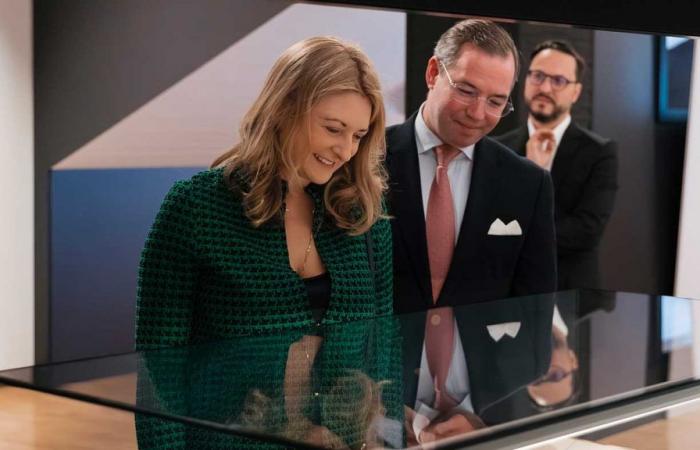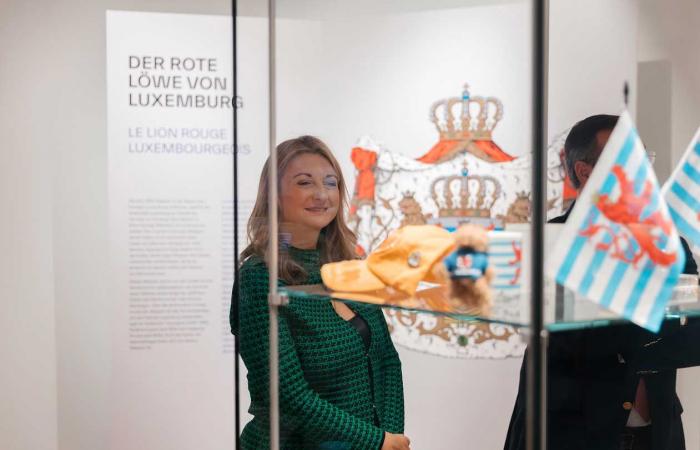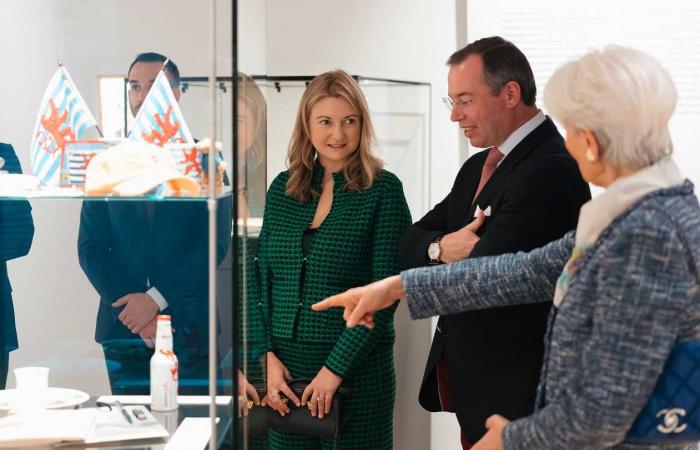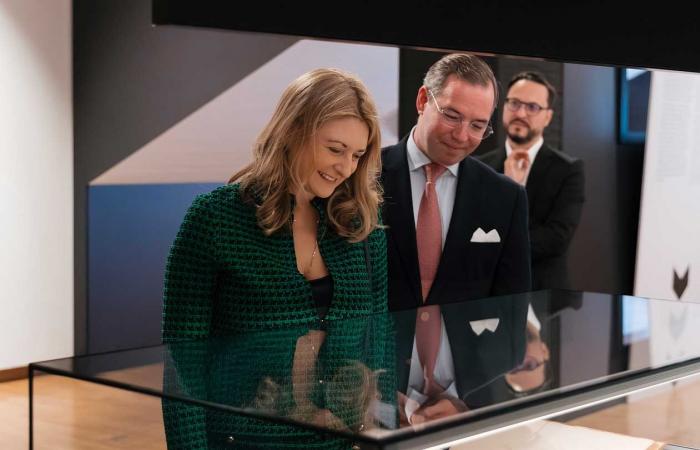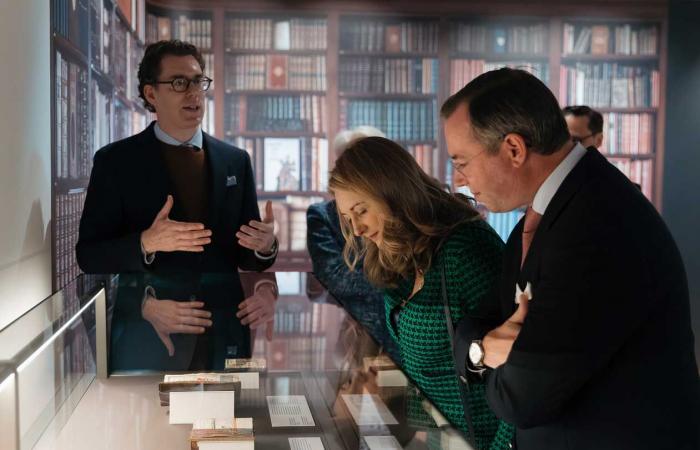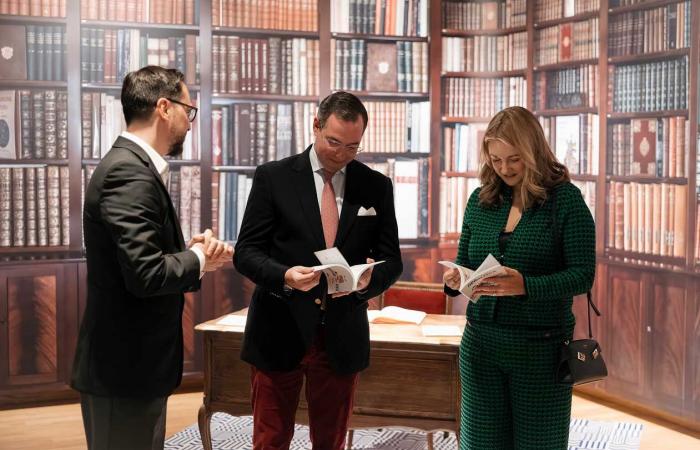Hereditary Grand Duke Guillaume and Hereditary Grand Duchess Stéphanie visited an exhibition dedicated to heraldry. The study of coats of arms and coats of arms is a particular historical science, respecting a large number of codes and also calling on symbolism. The visit of the heir couple took place a few days after the transfer of the lieutenancy to William.
Read also: William of Luxembourg becomes lieutenant-representative of the Grand Duke: Henri takes a first step aside
Guillaume and Stéphanie de Luxembourg decipher the world of heraldry
This Tuesday, Hereditary Grand Duke Guillaume of Luxembourg became the lieutenant-representative of his father, Grand Duke Henri, during a swearing-in ceremony in the Chamber of Deputies. From now on, the heir to the throne can act in the name of his father, who remains the head of state of Luxembourg. After experiencing this great moment, Guillaume quickly got back to work.
This Friday, October 11, it was not as lieutenant-representative of Grand Duke Henri but in his name that Guillaume visited an exhibition at the National Library (BnL). The Hereditary Grand Duchess Stéphanie accompanied him. The BnL is currently offering the exhibition “Ars Heraldica – The world of coats of arms”. This explores the historical science of heraldry, the study of coats of arms and coats of arms.

Read also: With their heads in the plans of their future house, Guillaume and Stéphanie from Luxembourg visit a construction company
A collection of heraldic manuscripts exhibited at the BnL
From the Middle Ages, great families, noble or not, used coats of arms to represent them, mainly on their shields. Subsequently, the coat of arms was used to announce itself and the holders also see it as their symbolic representation. With a contemporary look at family coats of arms, we can detect its history, its alliances, its feats of arms or its legendary origins. The coat of arms can also include symbolic elements which must guide the conduct of its holders.
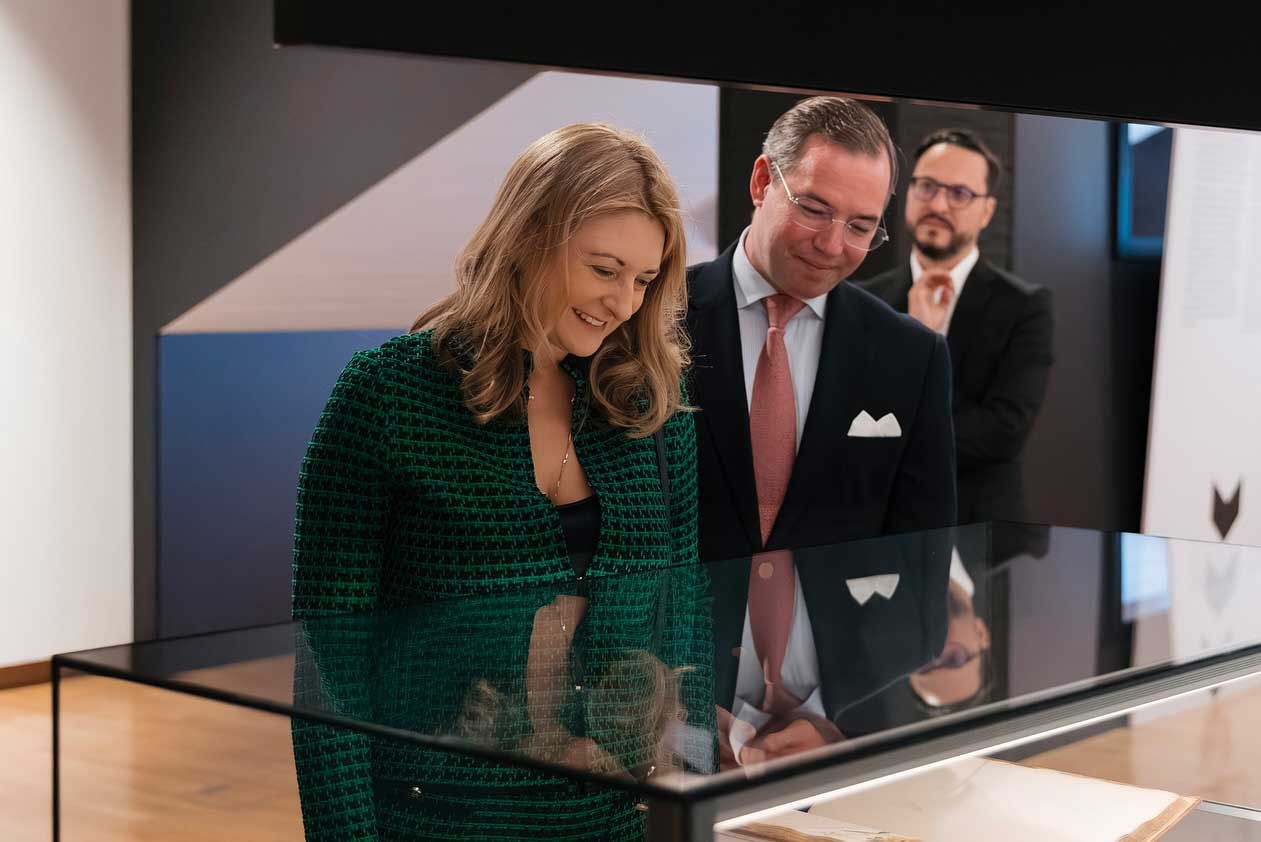
Today, coats of arms are also used by religious orders, associations, sports clubs, municipalities and of course, royal families. The coat of arms of Grand Duke Henri, as a symbol of the current head of state, is established by a grand ducal decree of 2001. The central shield is divided into four parts, parts 1 and 4 represent the The Luxembourg shield, a crowned red lion in front of a background lined with blue and white. Parts 2 and 3 represent the shield of the Nassau family, a crowned yellow lion in front of a blue background spangled with gold. In the center of the shield is another shield which is that of the Bourbon-Parma family, a golden lily surrounded by a red border with shells.

Read also: Stéphanie de Luxembourg wears the Chaumet emerald tiara in honor of the Czech president
Heraldry uses very specific vocabulary, especially when it comes to listing the coat of arms. Coat of arms is the way we read the coat of arms. For example, each color has a different name. Gold means yellow, azure means blue, gules is red and sable is black. The symbols, which we call furniture, also have their specific name. A lion with its head in profile is a lion; when it has its head in profile, it becomes a leopard. When the lion is rampant, it is standing on its hind legs, when it is horizontal it is passerby and it is referred to as a leopard lion.

Hereditary Grand Duchess Stéphanie, born countess into the Belgian Lannoy family, also has a coat of arms. The blazon of the Lannoy arms is “ Argent with three lions Vert, crowned Or, armed and langued Gules “. This means that there are three green lions standing, with crowns. Lions stick out their tongues and show their claws which are red.
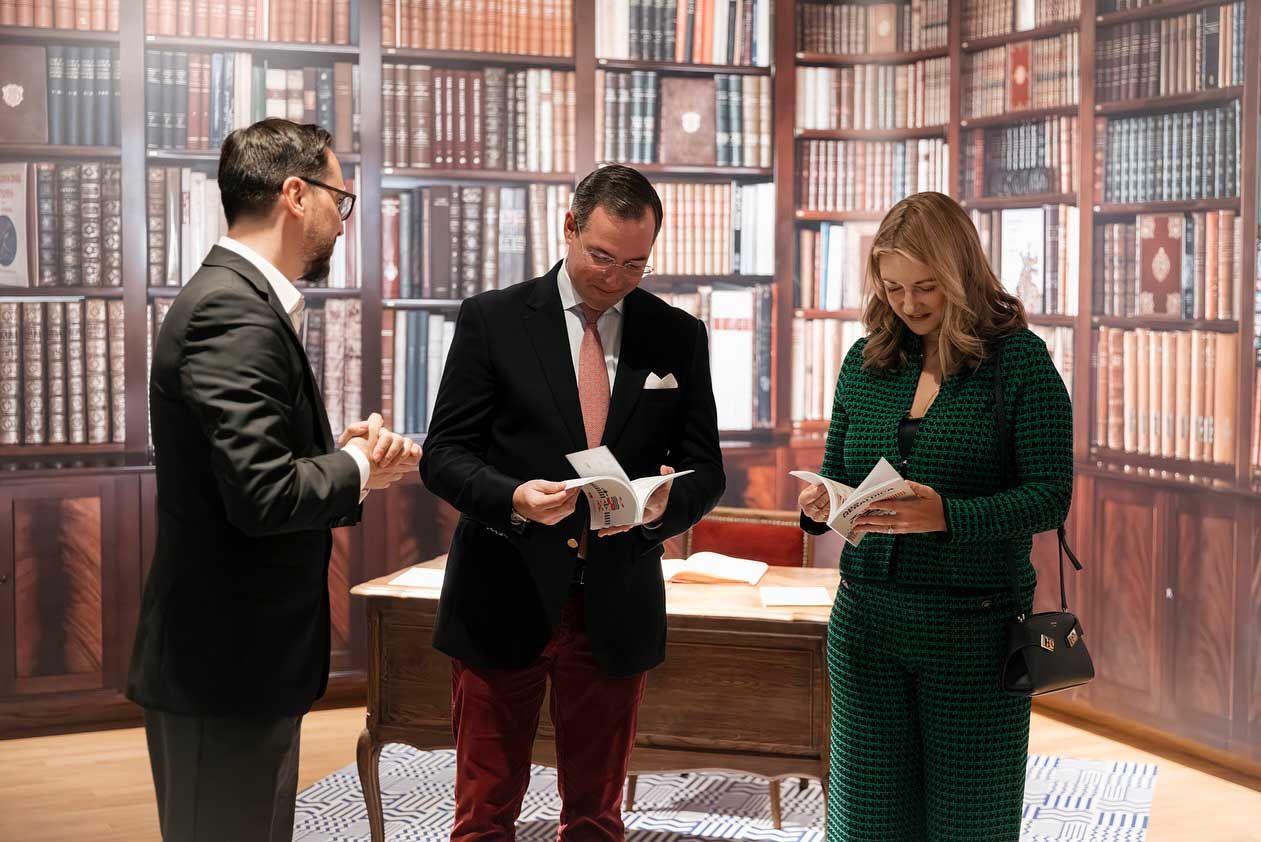
The heart of this exhibition is based on the precious manuscripts from the collection of Doctor Jean-Claude Loutsch, which were donated to the National Library in 2021. This collection includes a set of 44 old manuscripts, half of which are on display.

